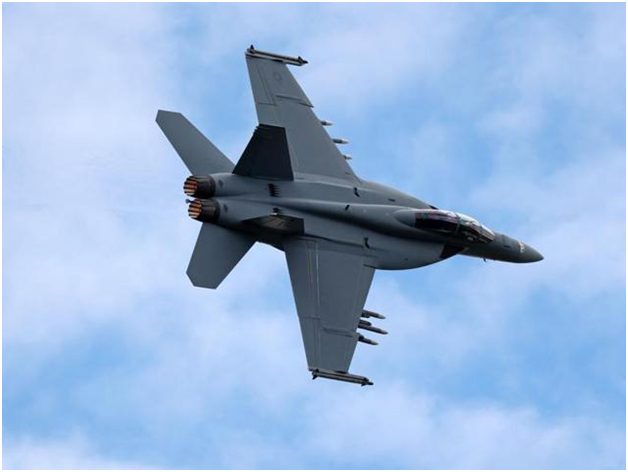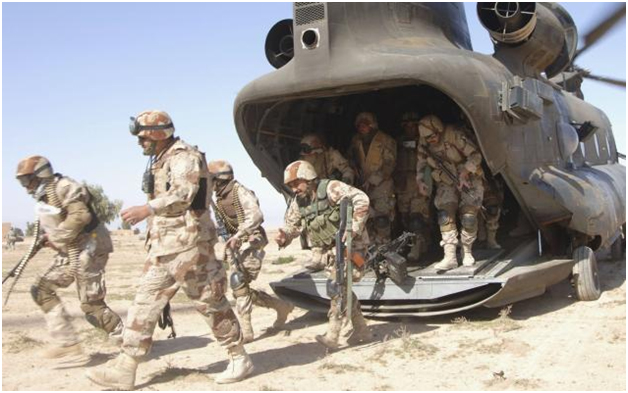A Multi-Billion Dollar US Mideast Arms Market May be in Jeopardy

UNITED NATIONS, Feb 17 (IPS) - When President Saddam Hussein ran one of the world's most authoritarian regimes in the militarily-volatile Middle East during 1979-2003, US newspapers routinely described him as "the strongman of Iraq" — as most journalists rightly view dictators worldwide.
But one of his political aides, described as "Saddam's right-hand man" (what if Saddam was left-handed?), took issue with a visiting US journalist when he rather hilariously challenged the description.
"No, no, no", said the aide, unfamiliar with the nuances of the English language, "Saddam is no strong man. He is the strongest man in Iraq".
But that prodigious military strength was built on a massive arsenal of weapons, mostly from the then Soviet Union (under a 15-year Treaty of Friendship and Cooperation) and also from France and UK.
Pieter Wezeman, Senior Researcher, Arms and Military Expenditure Programme, at the Stockholm International Peace Research Institute (SIPRI), told IPS that after 2003, Iraq received large amounts of weapons from the US, partly as aid, and partly paid for by Iraq.
The US has been the largest arms supplier to Iraq during 2003-2018. However, Iraq has looked for alternative suppliers too, he said.
"Already, in 2005 it ordered Russian transport helicopters, about 40 of these were delivered 2006-2011. To integrate these into the Iraqi armed forces was probably not such a big deal, as they were of a type Iraqi had already been operating since the 1980s, when the USSR supplied them," Wezeman pointed out.
At a press conference at the presidential palace in Baghdad back in late 1981 – where I found myself a captive for over four long hours– the Iraqi president lambasted the Iranians, with whom he was at war (1980-1988), and blasted Israel for the June 1981 sneak air attack on the Osirak nuclear reactor, 128 miles south of the Iraqi capital.
Backed by its arsenal of weapons, Iraq invaded neighbouring Kuwait in August 1990 when its short-lived seven-month occupation ended as a US-led coalition ousted the Iraqis who had defied a Security Council resolution calling for troop withdrawal.
When a US-led coalition invaded Iraq and ousted Saddam Hussein from power in March 2003, the Bush administration transformed Iraq into one of the biggest US arms markets in the Middle East, ranking behind Saudi Arabia, Israel and Egypt.
The US arms included sophisticated jet fighters, combat helicopters, air-to-air and air-to-ground missiles, warships, battle tanks, howitzers, and armoured personnel carriers, along with military assistance—largely under a bilateral Strategic Framework Agreement.
The Wall Street Journal reported last month that Iraq was considering purchasing a Russian air defense system-- perhaps to spite the US following a demand by the Iraqi parliament that US troops, numbering over 5,200, leave Iraq.

The Trump administration has refused to concede to the demand, prompting Iraq to accuse the US of violating sovereign territory and perhaps the UN charter—largely triggered by the drone-killing of Major General Qassim Suleimani, the commander of Iran's Quds Force, inside Iraqi territory.
Conscious of American assistance to fight the insurgent group ISIS, one Iraqi official told the New York Times last month: "We don't want Americans to leave. We want American troops to leave."
Dr. Natalie J. Goldring, Senior Fellow and Adjunct Full Professor with the Security Studies Program in the Edmund A. Walsh School of Foreign Service at Georgetown University, told IPS it's logical for the Iraqi government to play off the United States against other Iraqi weapons suppliers.
She said the US and Russia are engaged in an arms race in the Middle East. In stoking violence in the region, the US government is also creating future markets for US arms manufacturers.
"Instead, the US government should be working to reduce conflict and weapons transfers to this volatile region."
She said the United States continues to dominate the global arms trade, accounting for 36 percent of the global trade in major conventional weapons from 2014-2018, according to SIPRI
Since 2005, the US State Department has approved more than $22 billion worth of Foreign Military Sales (FMS) to Iraq, mostly government-to-government transfers of military systems and equipment using their own national funds.
The US weapons to Iraq included 46 M1A1 battle tanks, 36 F-16 fighter aircraft, 24 IA407 helicopters, 9 C-130 cargo aircraft, F-16 munitions package (including Paveway tail kits, AIM-9M Sidewinder missiles, and AGM-65 Maverick missiles) and Contractor Logistics Support (CLS) packages for various air and ground platforms, according to the State Department.
Wezeman told IPS a bigger change occurred beginning 2012, when Iraq started to supplement US weapons with advanced new Russian equipment.
The Iraqis acquired 19 Mi-28 combat helicopters (the first country to receive this model after Russia itself) instead of US AH-64s and further Mi-35 combat helicopters and Pantsyr-S1 SAM systems (air defence system).
Around 2015, he said, Iraq also ordered a reported 300 BMP-3 tracked armoured vehicles and 73 T-90S tanks, several batches of both types have been delivered since.
Recently, he said, there have been reports that Russia has been ‘offering' its long-range S-400 SAM system. "It remains unclear if this is just Russia offering the system or if there is serious interest in Iraq to acquire it," said Wezeman.
To operate Russian and US equipment side by side may not be the best solution from a logistical and training perspective, but despite that Iraq has opted to do so anyway.
The major reason for that choice is likely to be related decreasing reliance on the US, an objective that may increase after the killing of Iranian General Suleimani in Iraq, and possibly lower prices for the Russian equipment.
Operating both Russian and US equipment is not unique for Iraq either. India has been operating Russian (Soviet) and European weapons since the 1960s and over the past decade it has increasingly added US weapons to the mix too.
Jordan has operated US and Soviet SAM systems side by side since the 1980s. NATO member Greece bought Russian SAM systems around 2000 and NATO member Turkey bought Russian SAM systems last year.
"So, it has been done and can thus be considered possible. Which is one more reason for the US to worry about it," he pointed out.
Dr Goldring told IPS that when the Iraqi parliament recently voted to remove all foreign troops from Iraqi soil, the Trump administration publicly dismissed the vote.
"President Trump continues to engage in a dangerous fallacy – that the United States gets to make the last move in international security issues. Although this resolution wasn't binding, it suggests the extent of Iraqi anger with the US government's decision to violate Iraqi sovereignty by assassinating Iranian General Suleimani on Iraqi soil."
She said President Trump "acts like a bully, both internationally and domestically". He ignores laws that he finds objectionable and acts as if the US government gets to do whatever it wants wherever it wants.
If the Iraqi government implements this resolution, in addition to removing ground forces, the US would be barred from using Iraqi airspace for overflights, among other restrictions," said Dr Goldring, who is Visiting Professor of the Practice in the Duke University Washington DC program and also represents the Acronym Institute at the United Nations on conventional weapons and arms trade issues.
*Thalif Deen is a former Director, Foreign Military Markets at Defense Marketing Services (DMS); Senior Defense Analyst at Forecast International; and military editor Middle East/Africa at Jane's Information Group.
© Inter Press Service (2020) — All Rights Reserved. Original source: Inter Press Service
 Global Issues
Global Issues